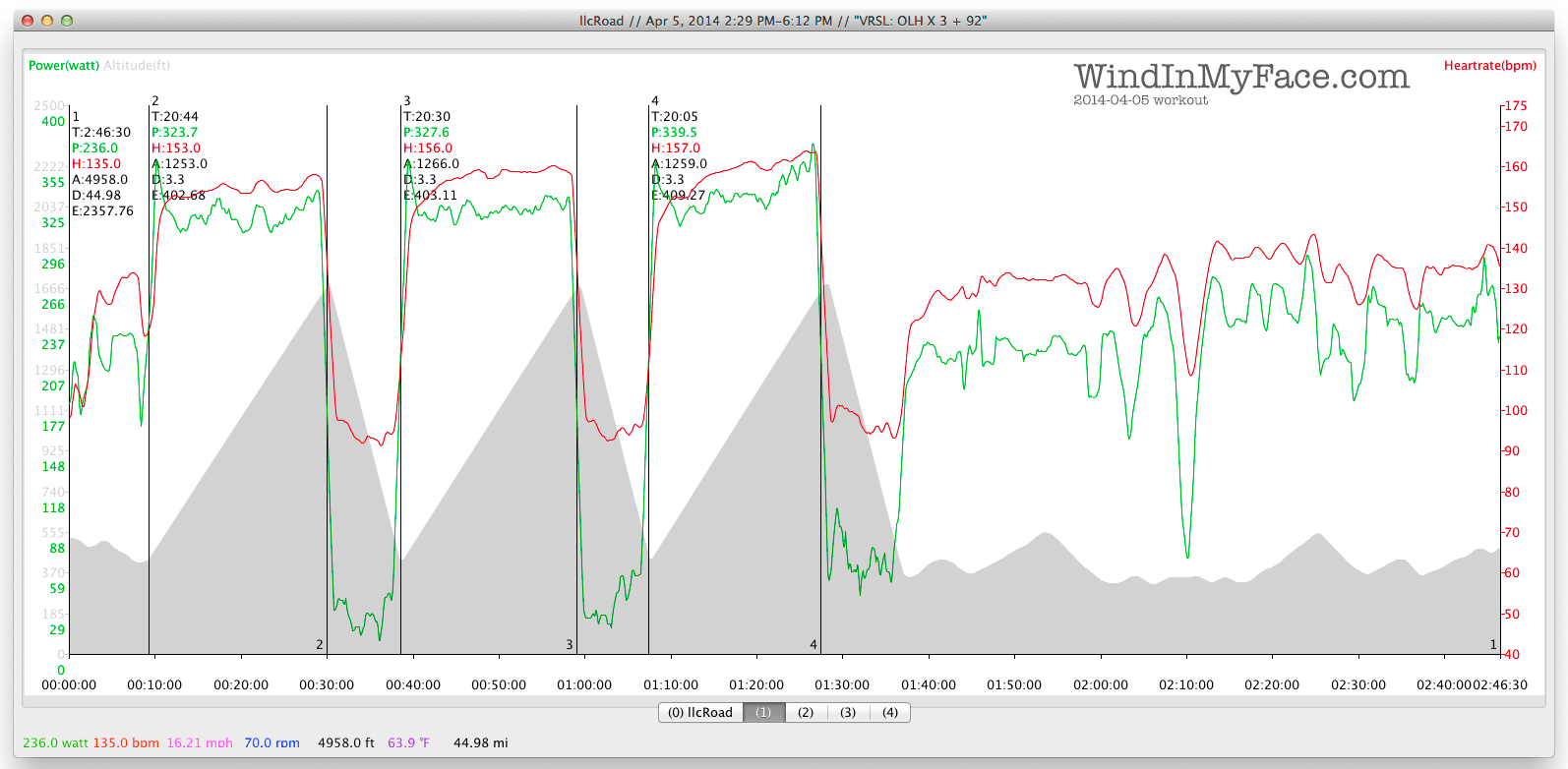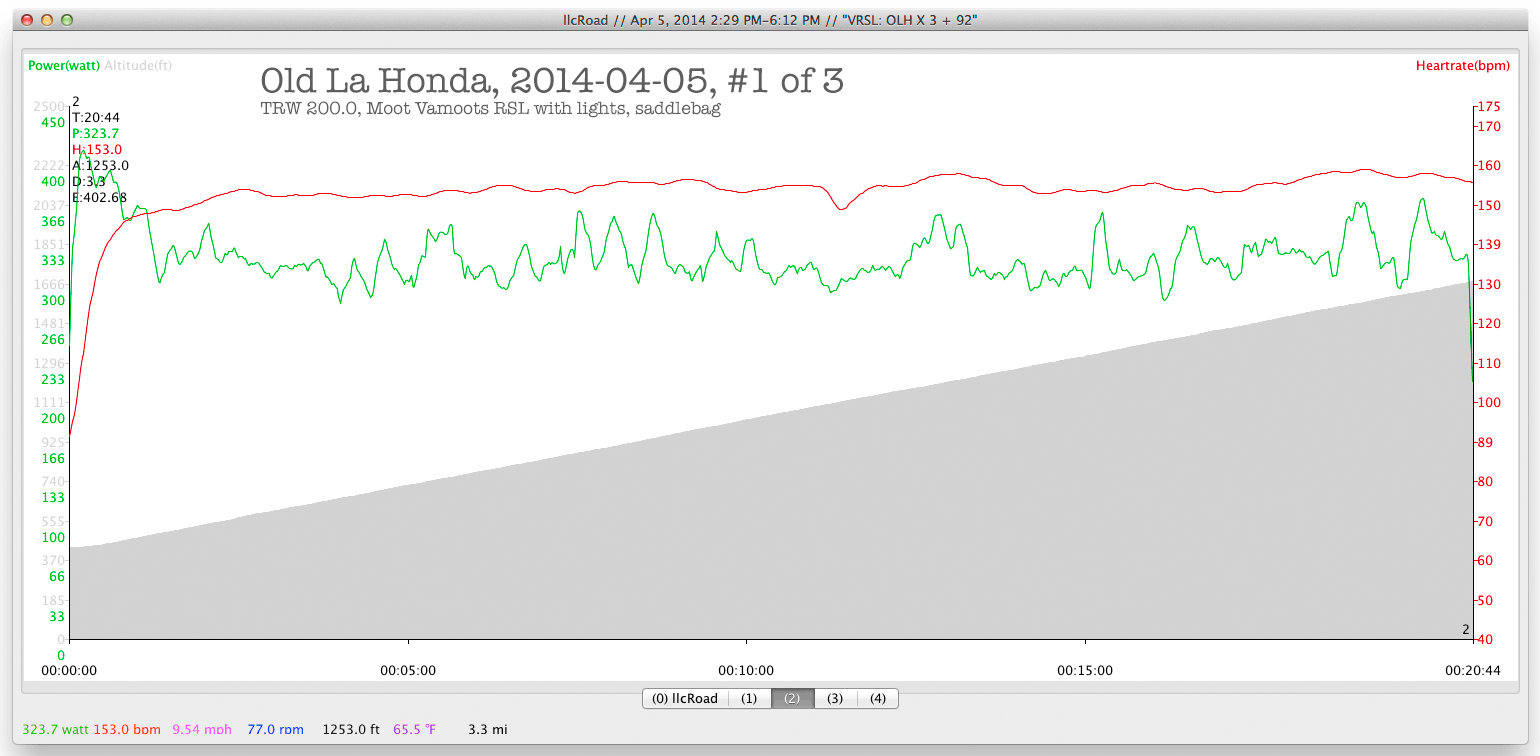
$220 SAVE $130 = 37.0% Western Digital 16.0TB Western Digital Ultrastar DC HC550 3.5-in… in Storage: Hard Drives
|

|

|

|

|
Raising Lactate Threshold in Early Season
Legal disclaimer: Since we are not doctors, never follow anything based on health-related or training topics on this or related sites without first consulting with your doctor or other trusted health professional.
I am not a cycling coach. What I share here is my own approach to training, presented in a way that I hope will be useful for readers looking for an approachable discussion.
After a 3-4 months aerobic training regimen followed by a very successful Solvang Spring Double, I concluded that it was time to layer some lactate threshold* training onto the substantial aerobic base I had developed.
Raising the lactate threshold is critical to races and performance events, but training it should be done only after 3-4 months of “long slow distance” so that their is a supporting base of high aerobic capability. Failing to train the lactate threshold makes the athlete a “single speed” performer.
As little as a month of the type of workout shown below performed just once a week can dramatically raise endurance under high power output conditions.
* Lactate is an acid that builds up in muscles when generating power anaerobically (without oxygen); “the burn” one feels at high exertion. Training can raise the power output to higher levels for any given level of this byproduct of the energy production process. Also, lactate is itself a fuel source, such that training the lactate threshold and increased aerobic power both mean that the body can burn off lactate much more quickly, which extends both the power and endurance envelope.
Analysis
The SRM power meter is a great help on any workout where the goal is a consistent effort; highly recommended.
Heading out with a vague idea to “do some climbing”, my legs didn’t feel like they were at 100%, but I’ve been wrong before on “feel” and this workout surely supports the idea that initial feel on a ride is not always an accurate predictor.
Feeling good on the first ascent, I elected to aim for negative splits: successively faster times on the same course. This I achieved, much to my gratification (and surprise), as this was my very first lactate threshold interval workout of the year.
Click for a larger graph. Red is heart rate, green is power.

When training at lactate threshold, a small increase in effort is very non-linear: a small increase in power feels a lot harder, and is much harder to sustain. This is the crude but highly effective way to discern the threshold short of a blood test (riding in a lab) or a maximal hour-long effort.
The subjective feel for my first ascent* (324 watts average) was that it was right around or just above the lactate threshold; it is good to oscillate effort right around the threshold and just above, to force the body to adapt with continued such training. The 2nd ascent raised that by merely 4 watts to 328 watts, but this could be felt as harder. The final effort was clearly more challenging (339 watts). Only ~3% harder in wattage terms, but 20% harder in perceptual terms.
My experience suggests that workouts of this nature which stress the system somewhat beyond the lactate threshold (with short intervals dropping below, as the power graph shows) are a very powerful and fast way to raise the lactate threshold. Oscillating around the threshold (slightly easier and slightly harder) seems to do the trick, as do steady 20-60 minute climbs at threshold.
These three efforts in 68°-58° F conditions mean that heart rate was minimally affected by temperature (average temp around 64° F or so, quickly feeling chilled at top). With a max HR of 175, the three efforts were at 87.4%, 89.1% and 89.7% of max heart rate. Past years of training tell me that my own lactate threshold can be trained to about 92% of max heart rate (161 bpm for me), which is consistent with my supposition that my lactate threshold here in early April is ~20-30 watts and 5-6 beats lower than peak fitness in late summer.
* Based on much experience over time with training, including lab VO2 max tests with blood lactate testing.
Mouse-over to compare the three ascents below.

Seagate 22TB IronWolf Pro 7200 rpm SATA III 3.5" Internal NAS HDD (CMR)
SAVE $100



